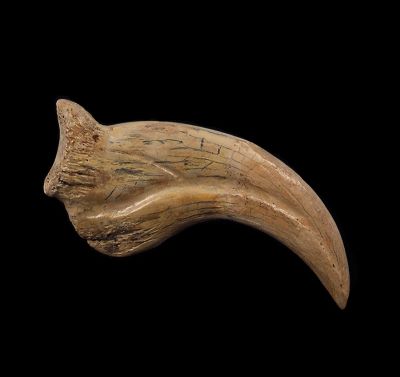
The discovery of velociraptor fossils has captivated scientists and enthusiasts, painting a vivid picture of a world dominated by these fearsome creatures millions of years ago. Among the most fascinating relics are the claws, which help understand the predatory lifestyle of this iconic dinosaur. The allure of owning a piece of this history drives the market for authentic specimens, like a real velociraptor claw.
The Velociraptor: A Fierce Predator of the Cretaceous Period
Velociraptors roamed the earth approximately 75 to 71 million years ago during the late Cretaceous period. These creatures were small compared to other dinosaurs, measuring up to 7 feet long and weighing around 33 pounds. Despite their size, velociraptors were formidable predators. Their anatomy was ideally suited for hunting, with a highly flexible wrist and a large, sickle-shaped claw on each hind foot that could deliver a lethal blow to their prey.
The distinctive claw, often highlighted in scholarly articles and popular media, was not just a weapon but also an integral part of their complex hunting behavior, suggesting these animals were more sophisticated hunters than previously believed. This claw has not only shed light on the predatory practices of velociraptors but also ignited people's imaginations worldwide.
Collectible Claws: A Link to the Ancient Past
For collectors, velociraptors' claws are not just fossilized bones but relics that provide a tangible connection to the prehistoric past. Due to their unique shape and the lore surrounding the creatures that bore them, claws are often the centerpiece of fossil collections. A velociraptor claw for sale is not just a purchase but an acquisition of a piece of Earth's ancient history.
Fossil trading, while complex, is facilitated by reputable suppliers who ensure that these ancient treasures are collected legally and ethically. Among such suppliers, Buried Treasure Fossils stands out as a supplier of a fantastic collection of Cretaceous and Jurassic dinosaur claws, offering specimens legally collected from private lands in the northwestern US and Morocco. These top-quality specimens are well-preserved and highly valued by collectors, enhancing any collection they join.
The Legalities and Ethics of Fossil Collection
The trade and collection of dinosaur fossils, including velociraptor claws, are tightly regulated. Laws ensure that these important pieces of our natural heritage are not lost or damaged due to irresponsible handling. Collectors must navigate these regulations to ensure that their specimens are both legally obtained and ethically sourced.
This legal framework protects the fossils, ensuring they can continue contributing to scientific research and public education while allowing enthusiasts to own a piece of prehistoric life. As interest in paleontology grows, strict adherence to these laws becomes more crucial.
Velociraptor Claws in Modern Culture
From museum displays to cinematic portrayals, velociraptor claws have become symbols of prehistoric life's intrigue and ferocity. Their cultural impact is significant, influencing academic fields like paleontology, entertainment, and media. This blend of scientific interest and mainstream appeal has helped spur a thriving market for dinosaur fossils, including claws, which are sought after by collectors and researchers alike.
Conclusion
The history of velociraptor fossils is as deep and intriguing as the layers of earth that once concealed them. These ancient predators, symbolized by their unique and fearsome claws, continue to stir curiosity and awe. Whether for academic study or personal collection, each claw offers a story, a snapshot of life millions of years in the past, preserved for the ages. As we continue to unearth these stories, we gain knowledge of the natural world and an appreciation for the fragility and complexity of life on this planet.










